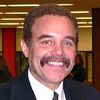Co-authored by Michael Holzman
"[T]he words desegregation and integration are used interchangeably, as if they are one and the same," wrote Rucker C. Johnson, an associate professor of public policy at the University of California at Berkley. "Conflating the two is erroneous, and lacks an understanding of the process [the Rev. Dr. Martin Luther King Jr.] envisioned -- 'to change behavior, not only laws.' Desegregation alone was not enough. Along the highway of justice, desegregation was to be an immediate point of origination -- the final destination: equal opportunity for all."
By that standard, not only is New York City off the highway, but it also couldn't find the highway with a map. More than 50 years after the passage of the Civil Rights Act, New York City -- considered the most diverse urban city in the world -- has extraordinarily segregated neighborhoods and radically unequal educational opportunities for its black children.
Segregated housing patterns ensure that most black students -- even those with college-educated parents -- attend poorly resourced public schools, while schools in predominantly white, wealthy neighborhoods have the resources to help children succeed.
Housing disparity looms large in education statistics. In 2013, 44 percent of white, non-Hispanic eighth-grade students in New York City public schools scored at or above grade level in reading on the National Assessment of Educational Progress (NAEP), compared with just 18 percent of black students.
That's not a comment on the students. It's about the schools. The more integrated the district, the better black students tended to perform. One third of black students in District 15 in Brooklyn, which is relatively integrated, read at or above grade level, as did 32 percent of those in District 2 in Manhattan. Forty-one percent of black eighth graders also did well in District 26 in northeast Queens -- New York's highest-achieving district -- but that district has a small black enrollment.
In fact, all black students in these districts scored higher than blacks in other city districts -- and that includes black students in other districts who do not qualify for the subsidized National School Lunch Program because their family incomes are too high.
How to explain the disparity? We believe schools in these high-performing districts have the resources and the mandate to make sure their students -- many from white, wealthy families -- succeed. The schools in segregated black neighborhoods do not have those resources.
Sadly, the New York City Department of Education creates institutional structures that support and validate the status quo. Middle-school students must compete for spots in the city's high schools using a highly sophisticated, literally Nobel-Prize-winning process. Highly educated, wealthy parents study it and devise strategies to get their children into the best schools. Parents who are less educated and overwhelmed by poverty have neither the time nor the access to information and support they need to work that system. As a result, black children tend to remain in under-resourced, admittedly inadequate neighborhood schools. School choice (which assumes that some schools are below-standard), "red-lined" gifted-and-talented programs, and segregated specialized high schools may meet the needs and soothe the political conscience of New York City's middle class, but these initiatives tend to leave the children of low-income and, especially, black parents with few opportunities -- in education and in life.
Segregated schools can leave children on the margins of society. In a 2014 study, Prof. Johnson said he found that students who attend them are "more likely to be poor; more likely to go to jail; less likely to graduate from high school, to go to college, or to finish if they go; more likely to live in segregated neighborhoods as adults; and their children are more likely to attend segregated schools, repeating the cycle."
Is this the promise of America we as a nation ought to embrace: that zip codes chart the life trajectory?
The good news is that we can set a new course for education.
The brain is the least of our problems: It has a neural plasticity that weaves experience into learning. Like a medieval cathedral, the brain is forever being repaired and restored and can be modified during adulthood to adapt to new circumstances and grow new neural pathways.
But where and how we learn does matter.
Intellectual development is optimized in desegregated, well-resourced, schools, where wealthy, middle-class and poor children learn to learn side-by-side on projects that invite self-expression and feedback. This allows students to share good teaching and other resources as well as their learning experiences and bridge the gap between the known and the unknown.
Learning happens when instruction is student-centered and challenging, and when students discover that intellectual capacity gained through teamwork is far more meaningful than what they acquire on their own. When students become comfortable with the idea of subjects "not yet learned" -- Carol Dweck of Stanford University calls this "the power of yet" -- they accept that through effort, failure and determination, they eventually will learn to succeed.
If New York City and many other urban districts want to get on track -- if they want to create equal opportunity for all -- then they must desegregate their schools and unleash the power of truly integrated learning. Only then can we find ways to bring citizens together and learn with and through each other.
This is where the highway of justice begins.
Michael Holzman is a researcher and author. He has served as consultant to numerous foundations and is the author of the Schott Foundation's series "Public Education and Black Male Students: A State Report Card."
Eric J. Cooper is the founder and president of the National Urban Alliance for Effective Education, a nonprofit professional development organization that provides student-focused professional development, advocacy and organizational guidance to accelerate student achievement. He can be reached at e_cooper@nuatc.org. He tweets @ECooper4556.
